How to Design APIs with MuleSoft Anypoint Design Center (Step-by-Step Guide)
Learn how to design APIs in MuleSoft Anypoint Design Center with this step-by-step guide. Know about API specifications, RAML/OAS, best practices, and real-world examples

APIs are no longer just a technical detail, they are the backbone of modern digital transformation. From mobile banking to supply chain logistics, enterprises depend on well-designed APIs to deliver secure, reliable, and reusable Mulesoft integrations.
MuleSoft’s Anypoint Design Center makes this process easier by offering a design-first approach that ensures APIs are planned, documented, and validated before they’re ever implemented. In this guide, we’ll walk you step-by-step through the process of designing APIs with MuleSoft’s Anypoint Design Center, covering API management best practices, real-world examples, and tips for long-term success.
Why API Design Matters
Many organizations rush straight into implementation, only to realize later that their APIs lack scalability, documentation, or governance. Poor design can lead to duplicated effort, compliance risks, and frustrated consumers.
A design-first approach with MuleSoft ensures:
- APIs are standardized from day one.
- Developers and business users share a common language through specifications.
- Mocking, testing, and governance are built into the lifecycle.
When done right, API design saves time, reduces costs, and provides a foundation for reuse across the enterprise.
Prerequisites for API Design
Before we dive into the steps, here’s what you’ll need:
- Anypoint Platform Account: You can sign up for a free trial if you don’t have one.

- Basic Knowledge of APIs: Familiarity with REST concepts, HTTP methods, and JSON will help.
- Understanding of MuleSoft API-led Connectivity: Knowing the difference between System, Process, and Experience, API led connectiivity gives context to how your design fits into the bigger picture.
Step 1: Accessing the Anypoint Design Center
After logging into Anypoint Platform, navigate to Design Center. This is where you’ll create new API specifications.

- Click Create → API Specification.

- Choose your specification language: RAML 1.0, OAS (OpenAPI 3.0), or AsyncAPI depending on your use case.
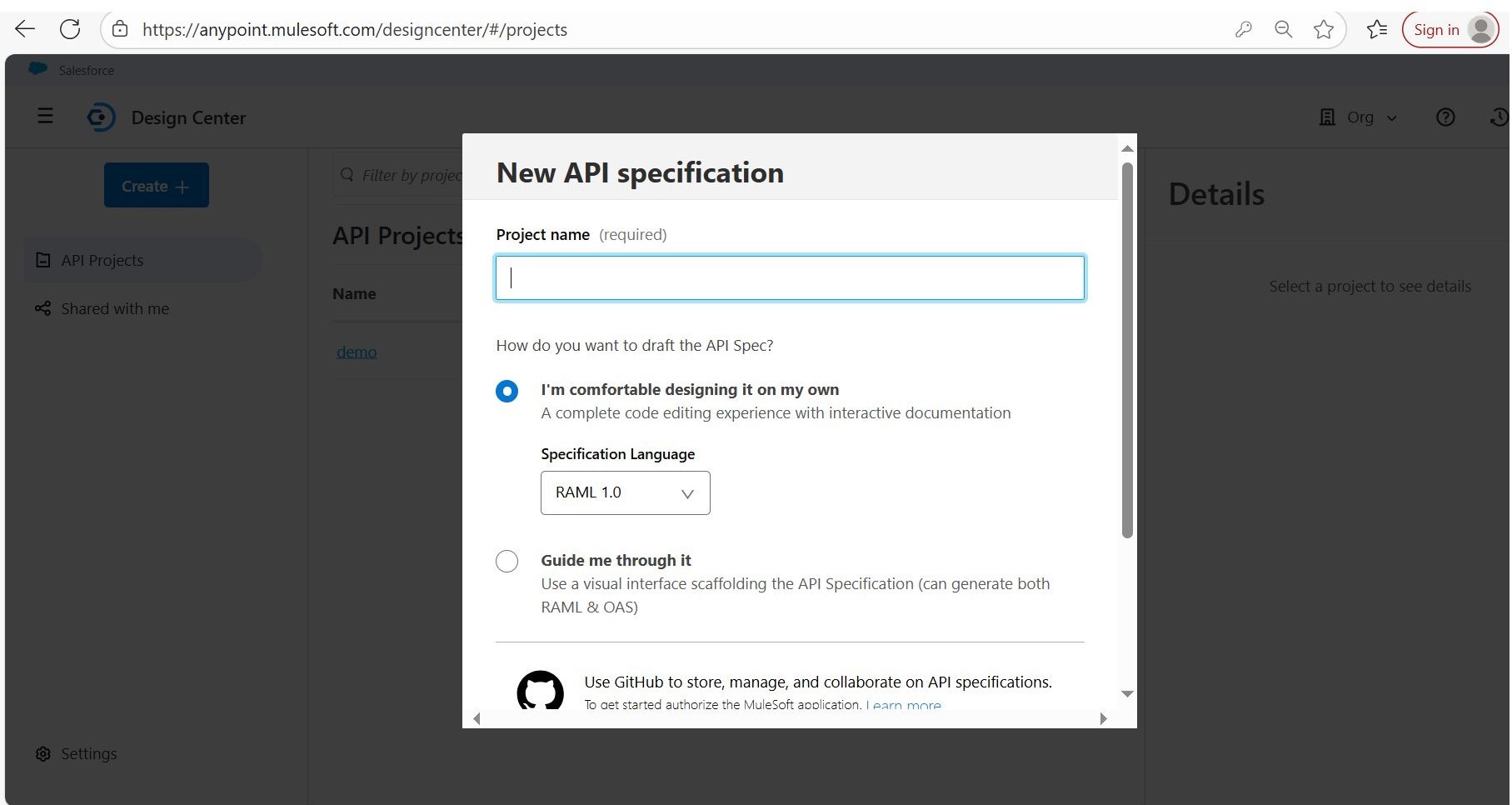
- Provide metadata such as API name, version, and description.
From here, you’ll see both a visual editor and a code editor, allowing you to work in your preferred style.
Step 2: Define the API Specification
Your first task is to create the high-level structure of the API:
- Title & Version: Example — Customer API v1.
- Protocols: HTTP/HTTPS.
- Base URI: Something like /api/customers.
- Media Types: Typically application/json.
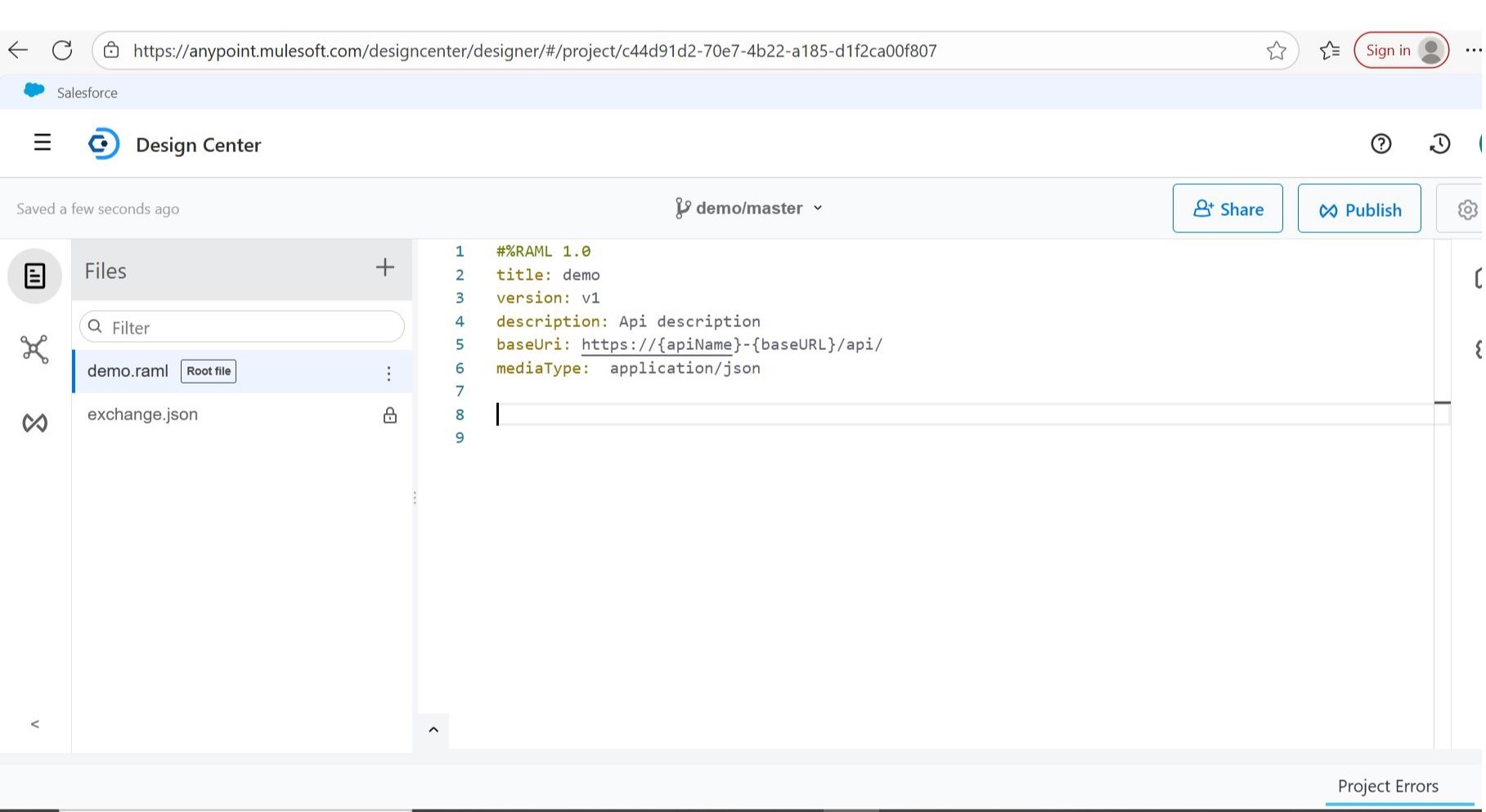
Anypoint Design Center automatically generates a live preview in RAML or OAS, so you can see your API definition evolve in real-time.
Step 3: Add Resources, Methods, and Data Types
This is where you shape the “endpoints” that API consumers will interact with.
Example:
- Resource: /customers
- Methods:
- GET /customers → Retrieve all customers
- POST/customers → Add a new customer
- GET /customers/{id} → Retrieve customer by ID
For each method, define request parameters, responses, and data types. MuleSoft allows you to design complex reusable data models like Customer, Order, or Product.
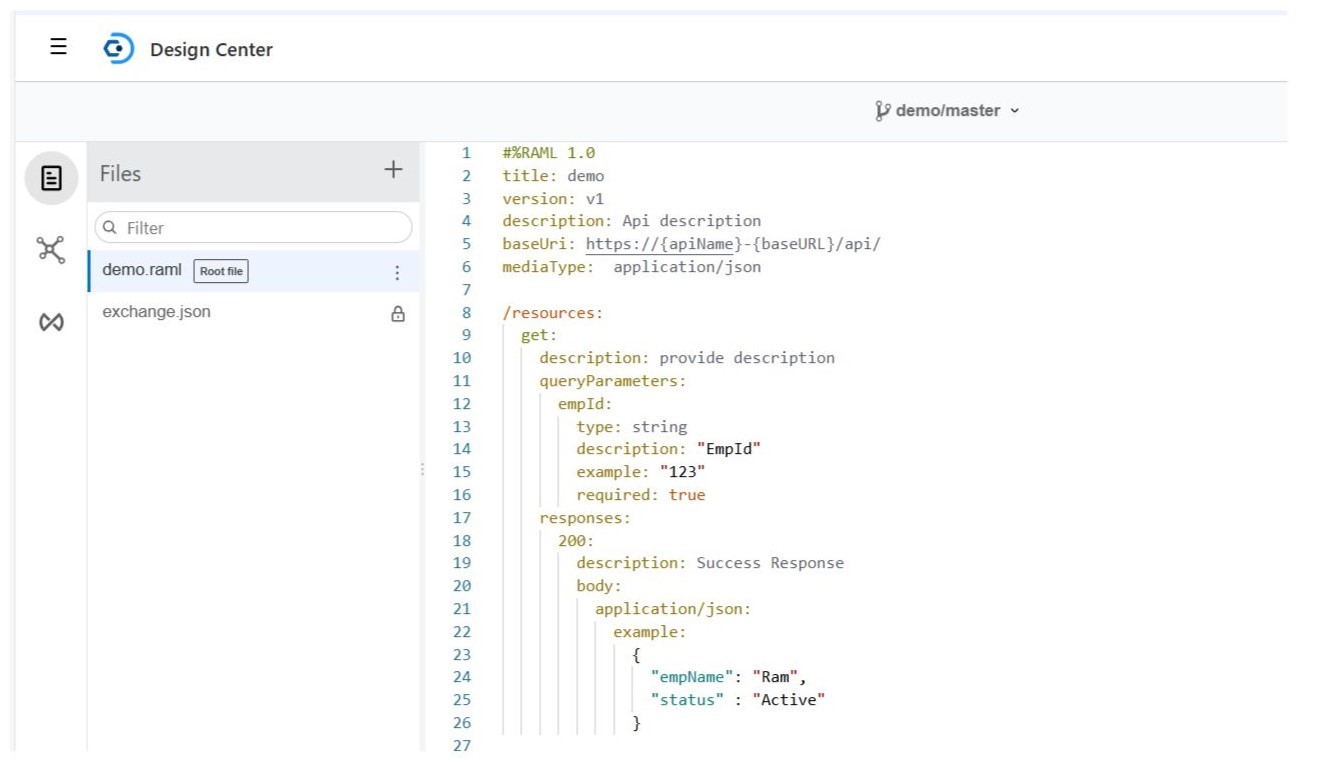
Step 4: Mock and Test Your API
One of the most powerful features of MuleSoft’s design-first approach is the built-in mocking service.
- Enable the mocking service directly from the Design Center.
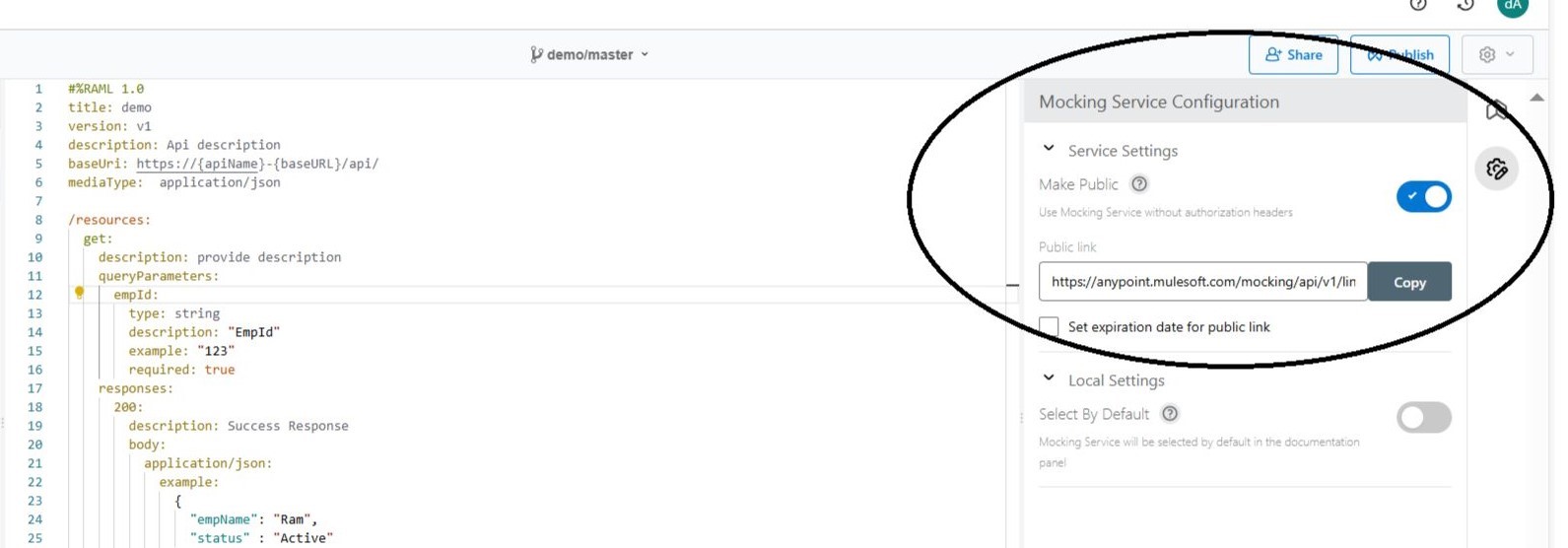
- Test endpoints with tools like Postman or cURL.
- Share the mocked URL with stakeholders for early feedback — even before the API is implemented.
This ensures alignment between business requirements and technical design.
Step 5: Publish to Anypoint Exchange
Once your specification is ready, publish it to Anypoint Exchange, MuleSoft’s internal marketplace for APIs.
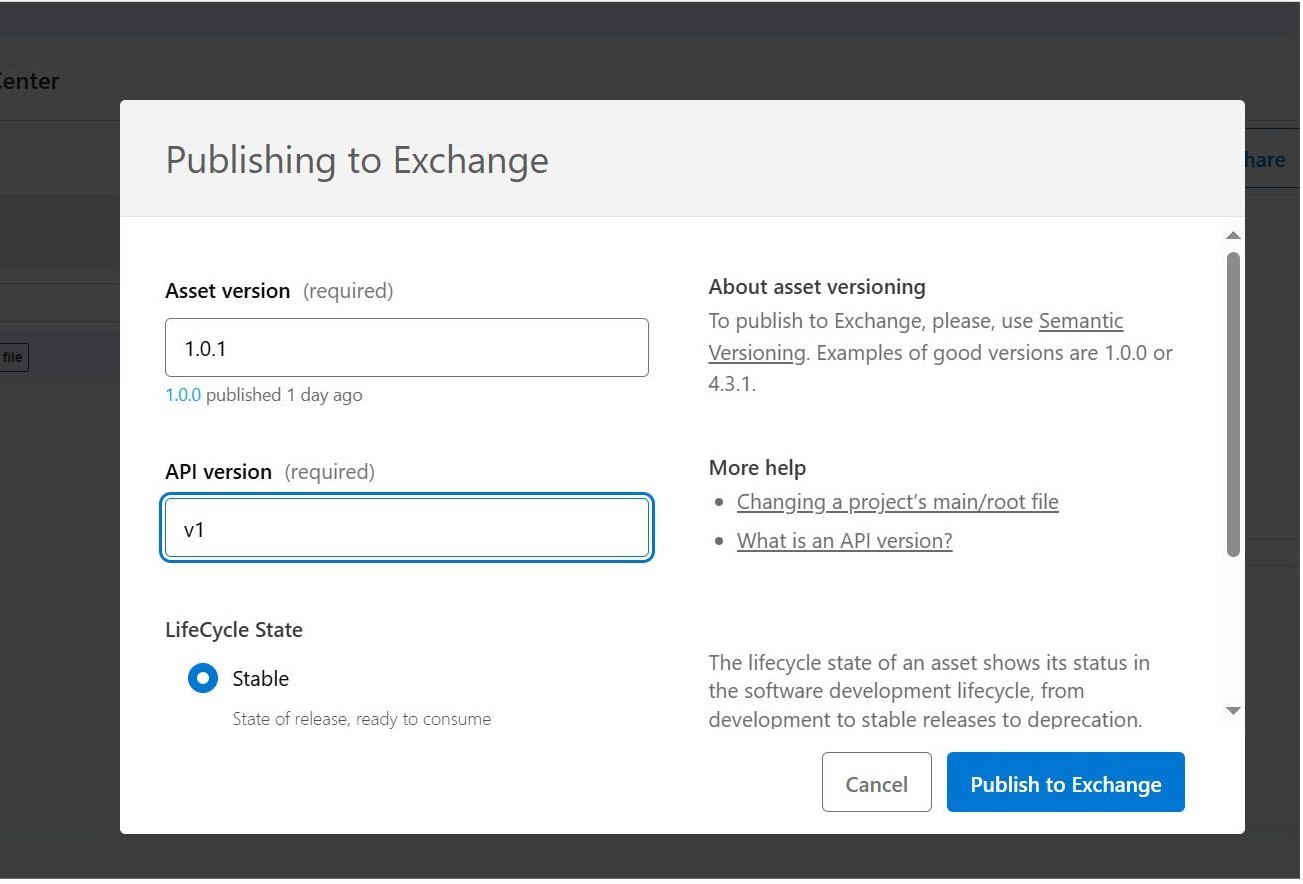
Benefits of publishing:
- Discoverability: Other teams can find and reuse your APIs.
- Collaboration: Business users, developers, and architects have a single source of truth.
- Governance: API specifications can be versioned, reviewed, and enforced.
Step 6: From Design to Implementation
Although this guide focuses on design, the natural next step is implementation:
- Import the API spec into Anypoint Studio.
- Use auto-scaffolding to generate flows based on your endpoints.
- Implement business logic, data transformations (with DataWeave), and backend integrations.
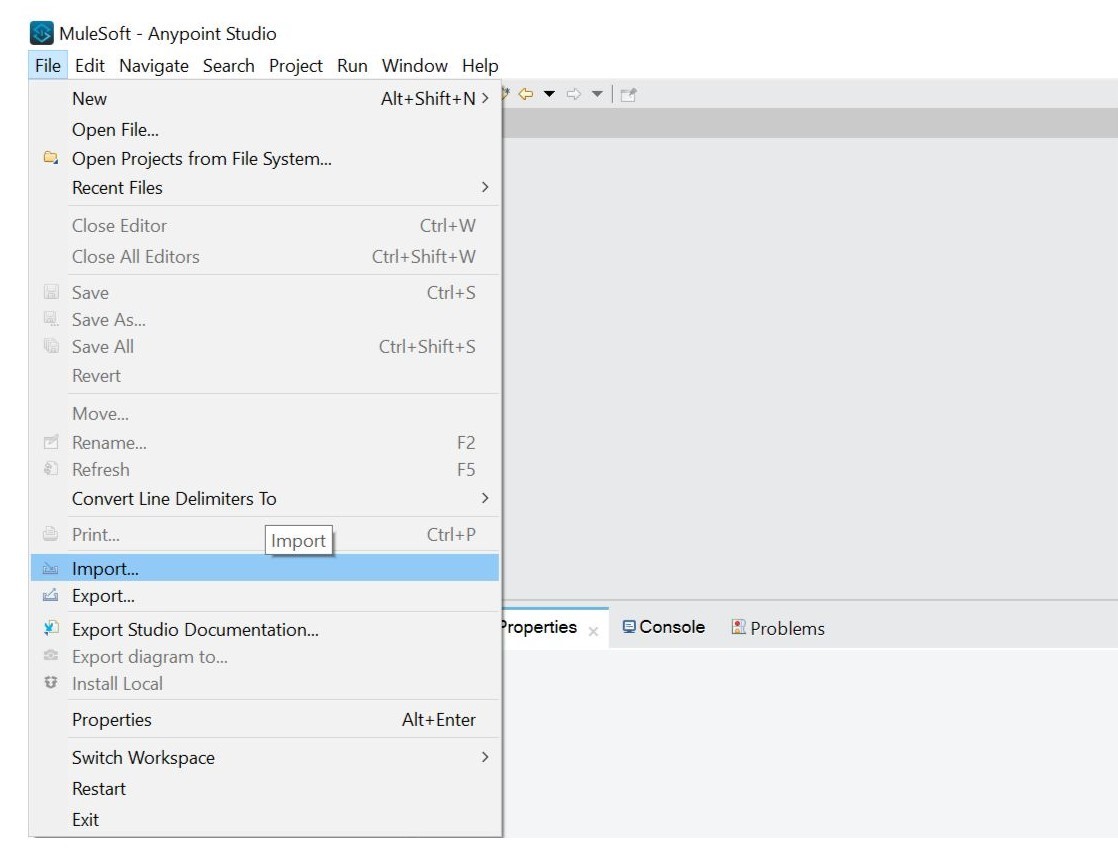
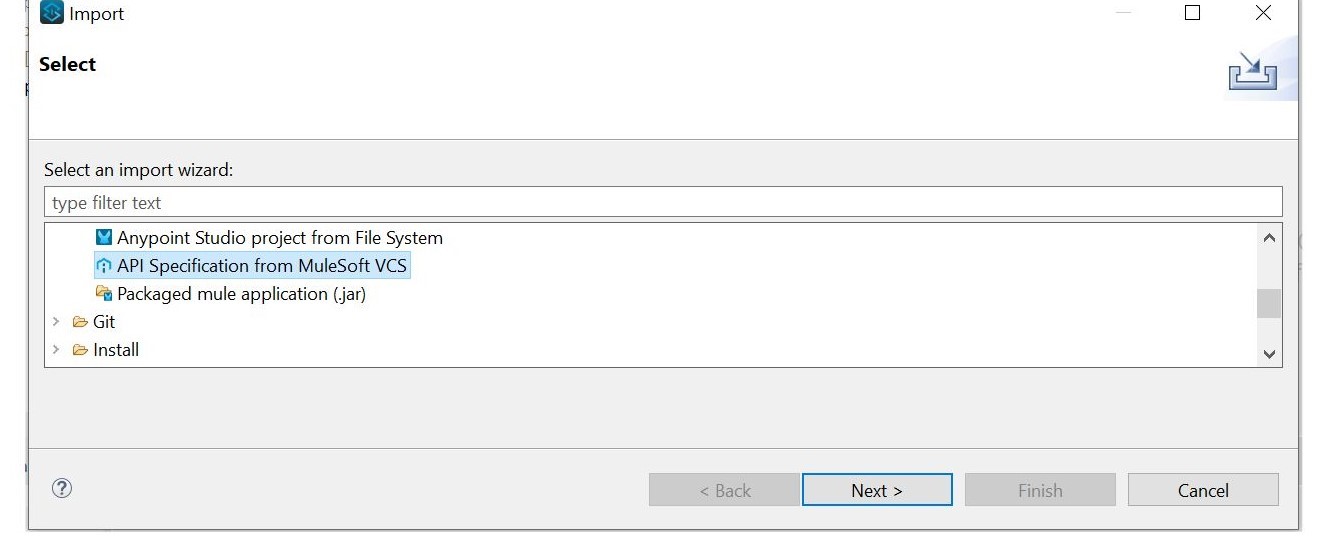
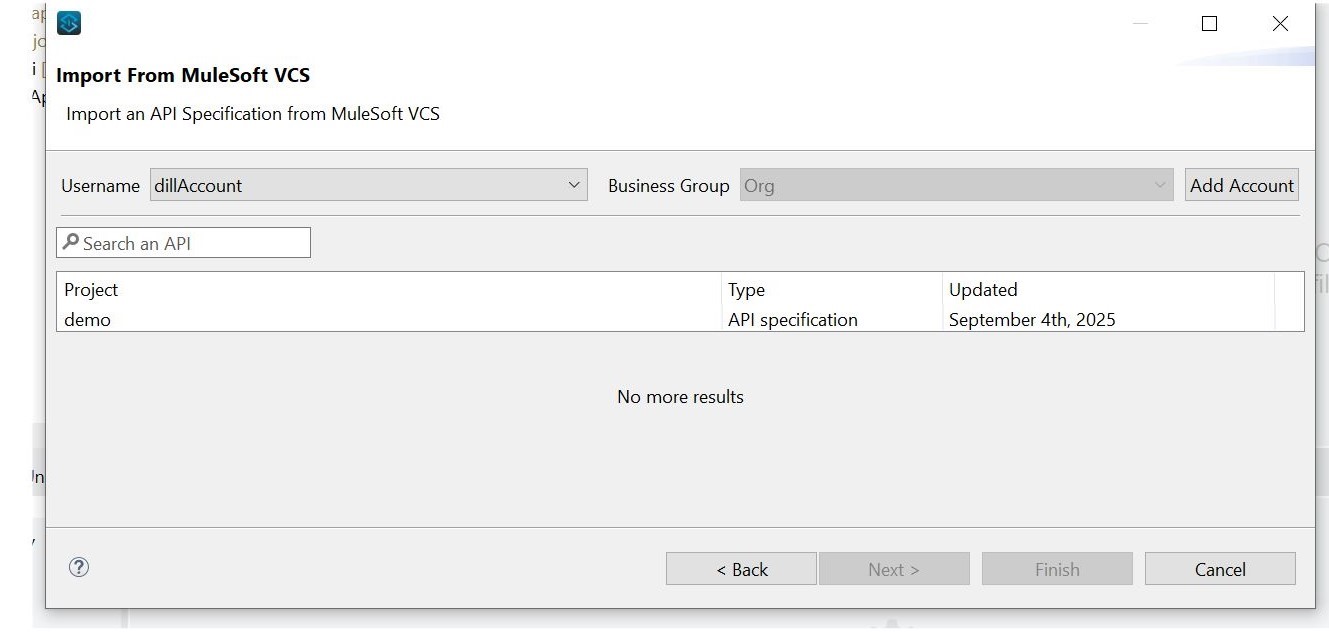
- Deploy to CloudHub 2.0 or Runtime Fabric via Runtime Manager.

This design-to-deploy flow is seamless because MuleSoft connects every stage of the API lifecycle.
Best Practices for API Design in MuleSoft
- Follow API-led Connectivity: Always structure APIs as System, Process, or Experience APIs for maximum reuse and governance.
- Use Consistent Standards: Stick with RAML or OAS depending on enterprise standards.
- Version Your APIs: Always include versioning in your base URI (/v1, /v2).
- Leverage Reusable Data Types: Define data types once and reuse them across endpoints.
- Document Thoroughly: Include examples, error codes, and sample payloads to improve developer experience.
Conclusion
Designing APIs with MuleSoft Anypoint Design Center is more than just defining endpoints, it’s about laying the foundation for scalable, secure, and reusable integrations. By following a step-by-step design-first approach, you ensure that your APIs are enterprise-ready from day one.
Whether you’re building a simple customer API or a complex system-of-systems integration, MuleSoft’s design capabilities ensure collaboration, governance, and agility across teams.
Start designing today by signing up for MuleSoft’s Anypoint Platform free trial and explore how design-first APIs can accelerate your digital transformation.
Are you looking to master MuleSoft API design? Start your journey with Anypoint Design Center and build APIs the right way. For tailored guidance on API-led connectivity, contact us and our experts will help you design scalable, reusable APIs for your business.

.svg)

